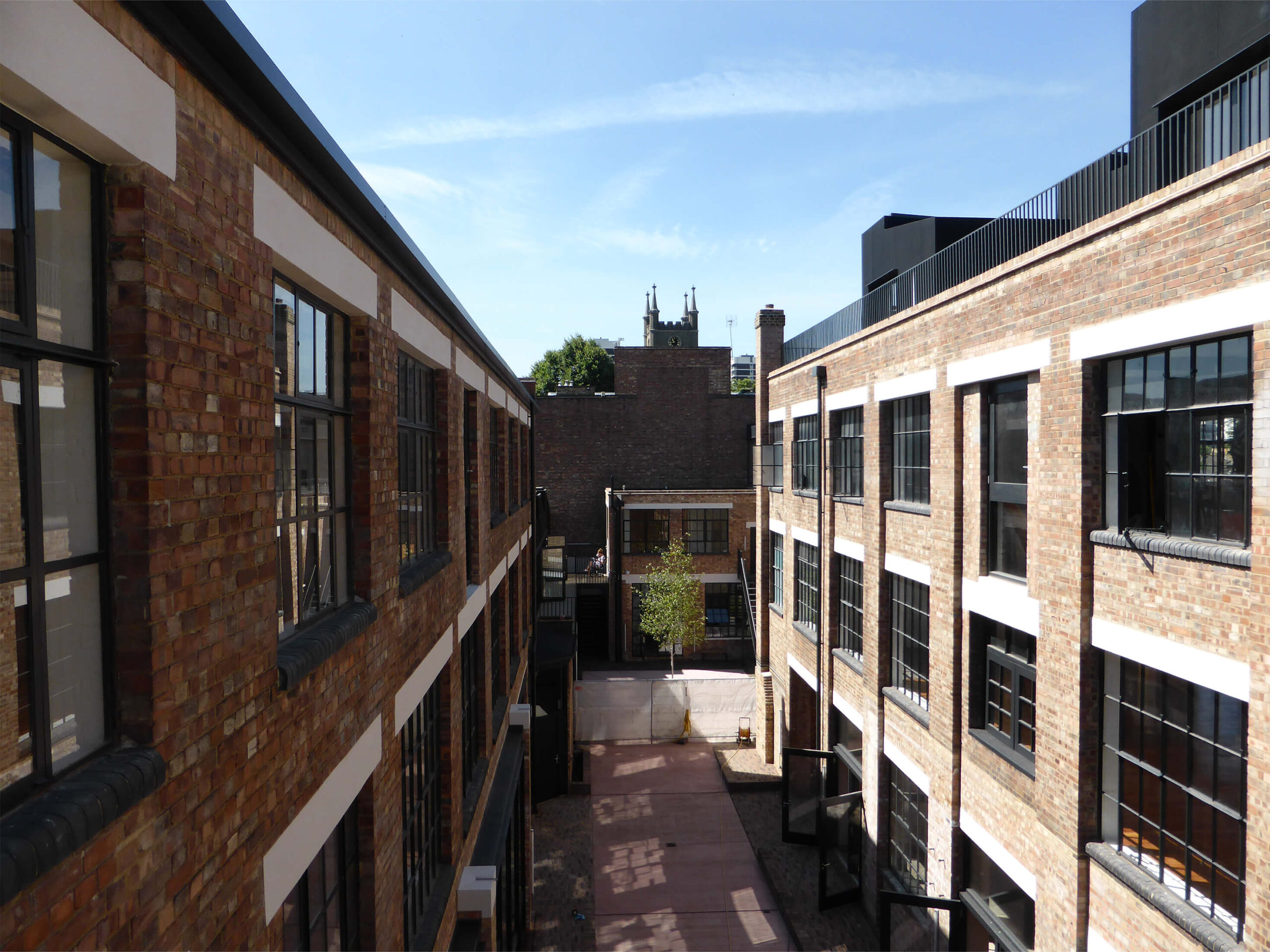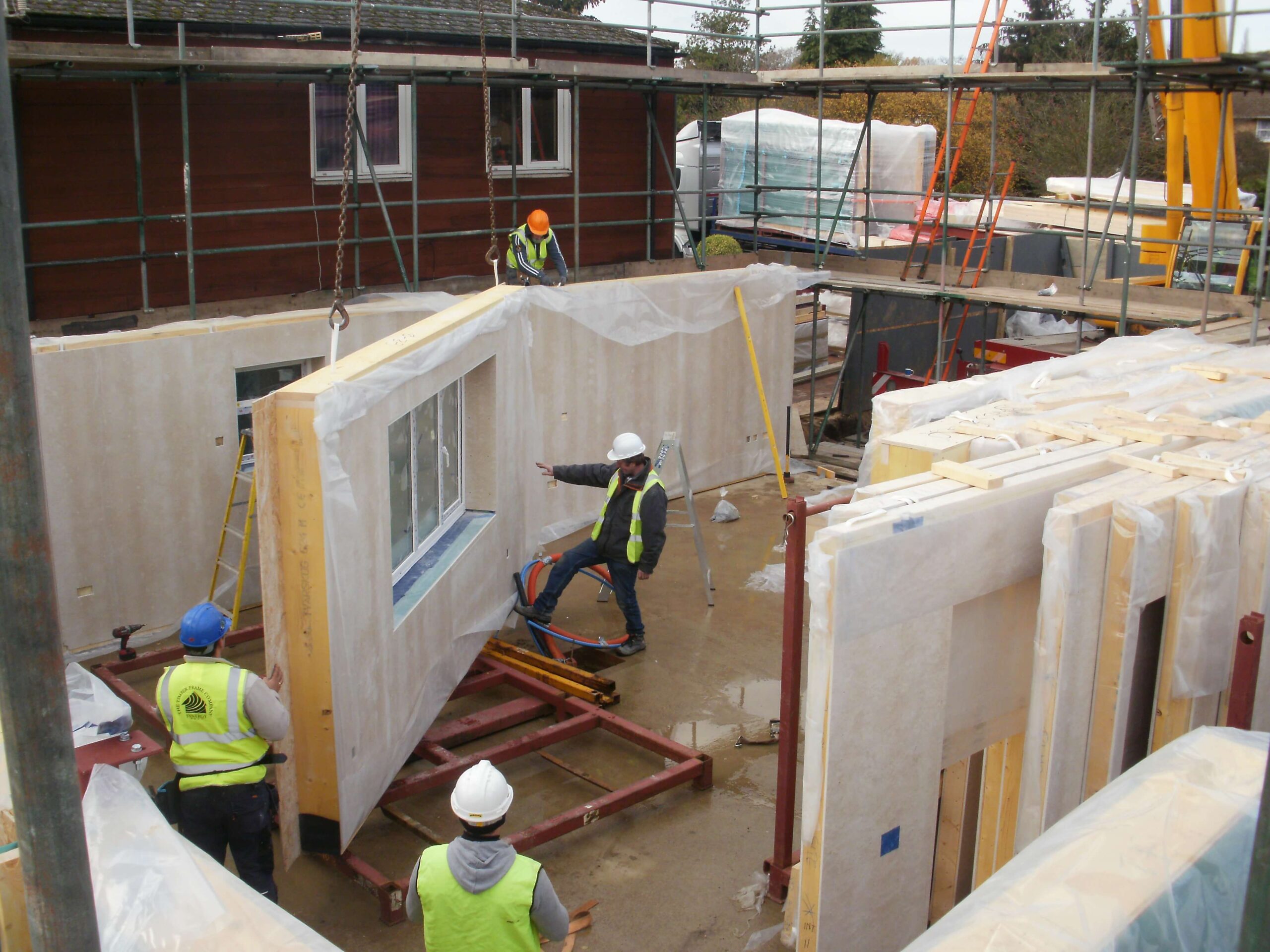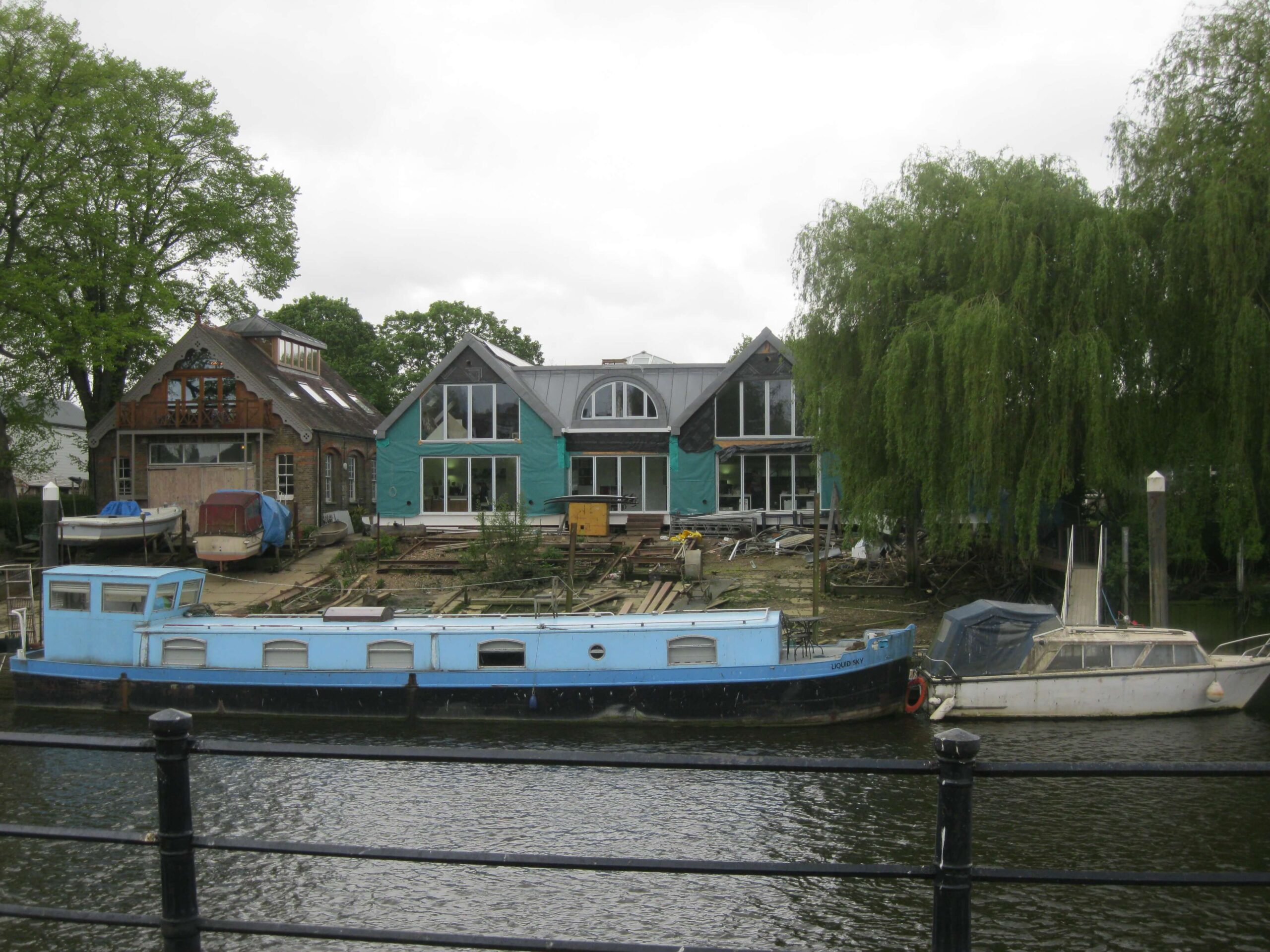Set in the Conservation Area of De Beauvoir town, a ward of the London Borough of Hackney, De Beauvoir Block started life as a row of six individual commercial buildings built in the 1920s. Owners The Benyon Estate – which manages around 350 properties across the district – had a vision for this former factory and warehouse site, which would see it become a new hub and workspace for the creative community that has made the area its home in recent years.
Launched in July 2017, De Beauvoir Block houses 33 commercial units, ranging from 300 sq ft to 2,500 sq ft, as well as a workspace which features dedicated desks and storage for members, offering a lower-cost alternative for start-ups and freelancers.
M&E feasibility and energy strategy
AJ Energy first got involved with the project in early 2014, through architects Henley Halebrown, with whom they have worked in partnership on a number of schemes in Hackney since 2009. The initial remit was to carry out a feasibility check of the M&E strategy for Phase 1 of the works, and to develop an energy strategy to meet Planning requirements – which included a 40% carbon reduction against the current Building Regulations (2010); standard London policy at the time. This involved demonstrating both how the refurbishment of the existing building, and the new-build spaces, could meet the requirements – which required two very difficult approaches. The existing areas would be served by gas central heating, while the new ones would have heating and cooling provided by wall-mounted split units, for an easily-installed electric-only solution that would be both efficient and low-noise.
After Planning Permission had been obtained, AJ Energy was approached directly by The Benyon Estate, to provide M&E design services. Initially just asked to get involved with the new-build floors at 92 De Beauvoir Road, the project’s scope grew as the benefits of their expert approach to M&E design became apparent. AJ Energy then took on the full M&E design for the refurbishment of the existing floors at 92 De Beauvoir Road, as well as the complete refurbishment and extension of the larger 94 De Beauvoir Road.
“We carried out an extensive cost review and value engineering exercise, which resulted in savings of around 10% on the M&E installation budget compared to the client’s original specification,” explains John Simpson, Managing Director at AJ Energy. “As parts of the project involved the refurbishment of an existing building, we also made sure to include a number of contingencies in case of unforeseen issues that might be uncovered during strip-out and demolition.”
“There were a number of areas in which we were able to effect cost savings without impacting on occupant comfort, and barely impacting on energy efficiency,” he continues. “By comparing products from a number of lift manufacturers we were able to save over £6k on the installation, while restricting comfort cooling to the café and the rooftop pods only, specifying gas-fired central heating elsewhere – where the aspect and shading of the spaces meant solar gain was low – also kept costs under control.”
“Additionally, we saved around £13k on the lighting system, with only a small reduction in efficiency. The size of the main office floors meant that high efficiency LED lighting would have cost a considerable amount, so instead we opted for high efficiency T5 lighting installed within the office floorplates.”
Quality and value
“What really stood out with AJ Energy was the quality of the service we received,” explains Josh Summers, Commercial Manager at The Benyon Estate. “Not only did we get access to the specialist knowledge and advice that we needed, we were able to do so easily and efficiently. Whereas some consultants will take a while to respond, or you’ll have to get passed around the office before you can obtain an answer, AJ Energy took a very personal approach. They were prompt with their responses, and so there was no time or money wasted through inefficiency.”
“We were delighted with the value engineering that AJ Energy came up with, mostly on our lighting and heating specifications. These money-saving exercises meant that keeping our budgets under control became a lot easier,” he continued. “Also, it was refreshing to work with a consultant who integrated so well, and worked as seamlessly as possible with every party involved. This meant we could be confident that every box was ticked, and nothing fell between the cracks.”
To read a more comprehensive version of this case study in PDF format please download below.
DBB Case Study – PDF





